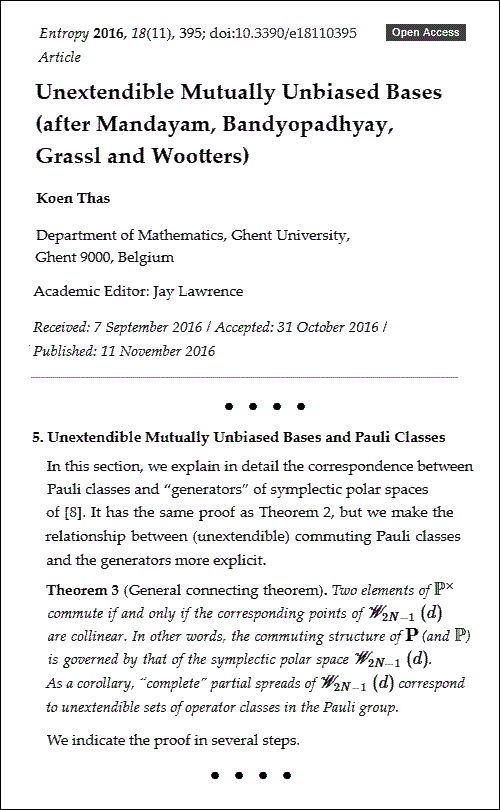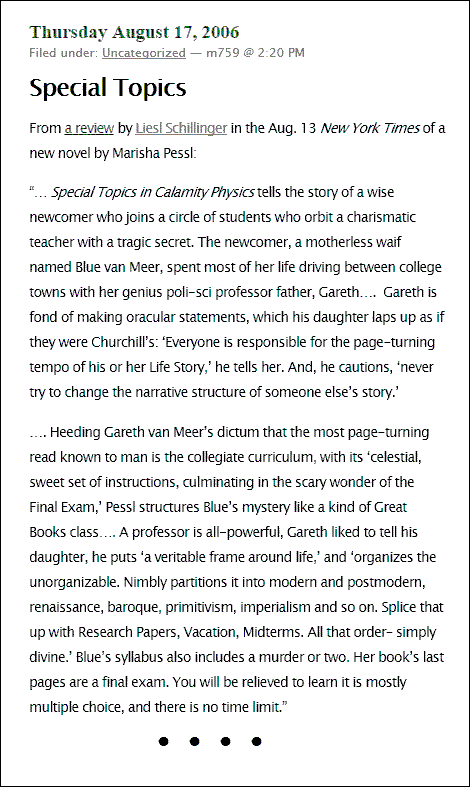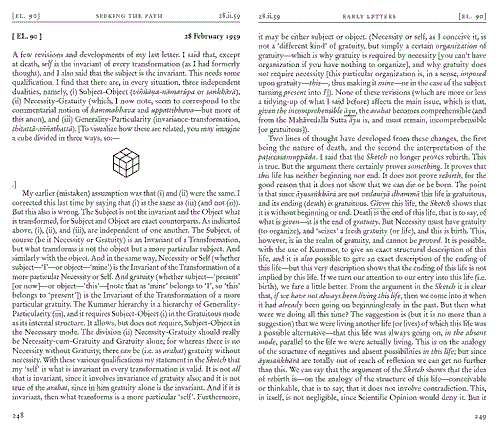|
From Broken Symmetries by Paul Preuss
(first published by Simon and Schuster in 1983) —
"He pondered the source of her fascination with the occult, which sooner or later seemed to entangle a lot of thoughtful people who were not already mired in establishmentarian science or religion. It was the religious impulse, at base. Even reason itself could function as a religion, he supposed— but only for those of severely limited imagination.
He’d toyed with 'psi' himself, written a couple of papers now much quoted by crackpots, to his chagrin. The reason he and so many other theoretical physicists were suckers for the stuff was easy to understand— for two-thirds of a century an enigma had rested at the heart of theoretical physics, a contradiction, a hard kernel of paradox. Quantum theory was inextricable from the uncertainty relations.
The classical fox knows many things, but the quantum-mechanical hedgehog knows only one big thing— at a time. 'Complementarity,' Bohr had called it, a rubbery notion the great professor had stretched to include numerous pairs of opposites. Peter Slater was willing to call it absurdity, and unlike some of his older colleagues who, following in Einstein’s footsteps, demanded causal explanations for everything (at least in principle), Peter had never thirsted after 'hidden variables' to explain what could not be pictured. Mathematical relationships were enough to satisfy him, mere formal relationships which existed at all times, everywhere, at once. It was a thin nectar, but he was convinced it was the nectar of the gods.
The psychic investigators, on the other hand, demanded to know how the mind and the psychical world were related. Through ectoplasm, perhaps? Some fifth force of nature? Extra dimensions of spacetime? All these naive explanations were on a par with the assumption that psi is propagated by a species of nonlocal hidden variables, the favored explanation of sophisticates; ignotum per ignotius .
'In this connection one should particularly remember that the human language permits the construction of sentences which do not involve any consequences and which therefore have no content at all…' The words were Heisenberg’s, lecturing in 1929 on the irreducible ambiguity of the uncertainty relations. They reminded Peter of Evan Harris Walker’s ingenious theory of the psi force, a theory that assigned psi both positive and negative values in such a way that the mere presence of a skeptic in the near vicinity of a sensitive psychic investigation could force null results. Neat, Dr. Walker, thought Peter Slater— neat, and totally without content.
One had to be willing to tolerate ambiguity; one had to be willing to be crazy. Heisenberg himself was only human— he’d persuasively woven ambiguity into the fabric of the universe itself, but in that same set of 1929 lectures he’d rejected Dirac’s then-new wave equations with the remark, 'Here spontaneous transitions may occur to the states of negative energy; as these have never been observed, the theory is certainly wrong.' It was a reasonable conclusion, and that was its fault, for Dirac’s equations suggested the existence of antimatter: the first antiparticles, whose existence might never have been suspected without Dirac’s crazy results, were found less than three years later.
Those so-called crazy psychics were too sane, that was their problem— they were too stubborn to admit that the universe was already more bizarre than anything they could imagine in their wildest dreams of wizardry."
|










-embedding-in-PG(3,2)-Planat-Saniga.jpg)























